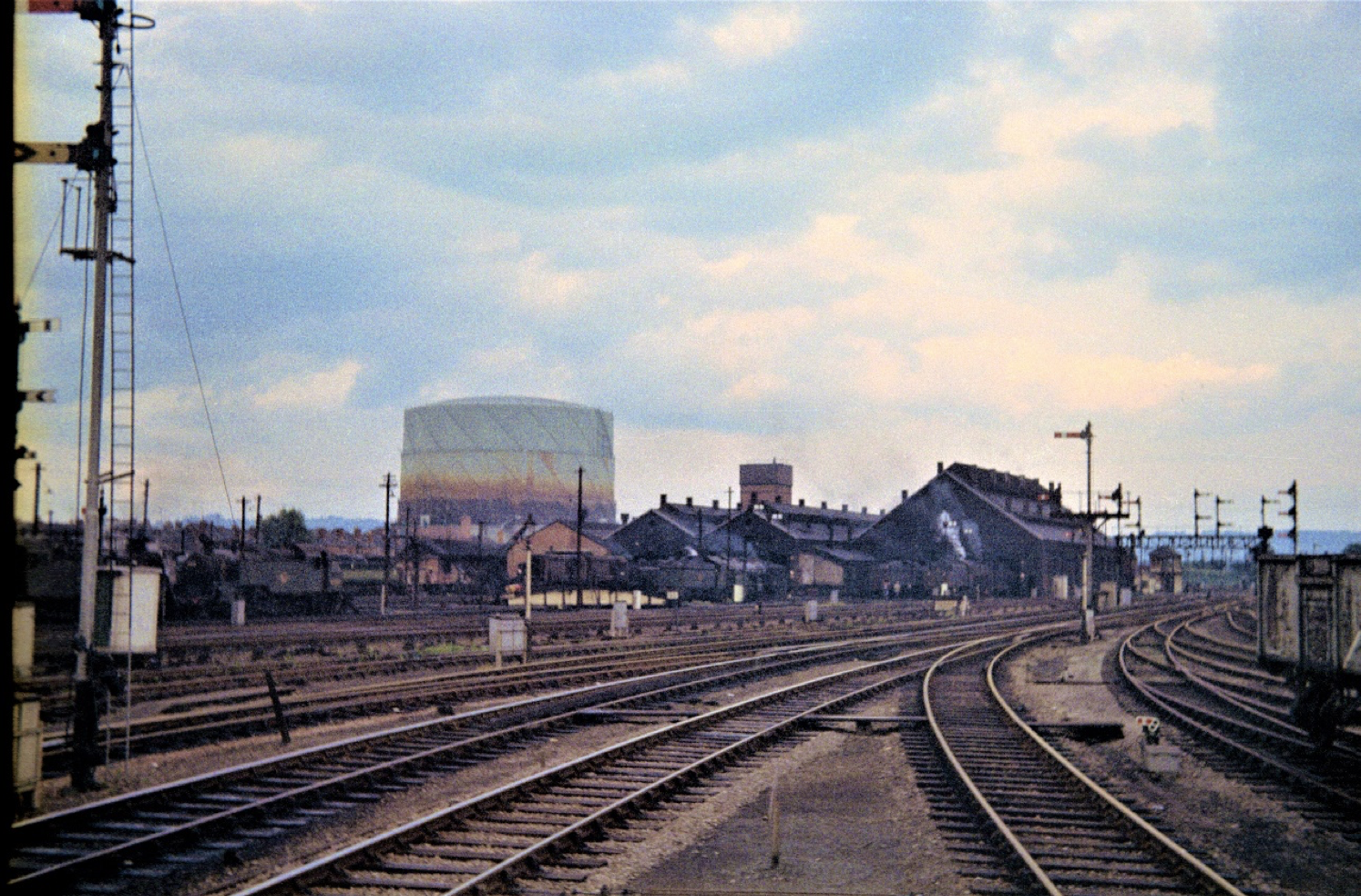Gloucester from 1967
Network developments
Although now working for British Rail in London, I continued to travel home to Gloucester regularly, still taking an interest in local railway happenings. Following the abolition of steam, the network in the Gloucester area underwent considerable rationalisation from 1967 onwards. The four-track section between Cheltenham and Gloucester reverted to double track (it had been quadrupled in 1942 during WWII). A bridge to carry the railway over the new M5 motorway was installed in Spring 1968.
The first stage of the Gloucester multi-aspect signaling scheme (MAS) came into use controlled from the new panel box at Tramway Junction from 25 May 1968, initially covering the route between Tuffley Junction and Cheltenham Lansdown. Colour-light signals became operational in stages, and the new Cheltenham signaling was commissioned on 24 November.
Over the first weekend in August 1968 (4th /5th), track rationalisation took place at Tuffley Junction in conjunction with the reduction from four to two tracks south to Standish Junction. The ex-Midland lines from Eastgate station were slewed across to provide a junction with the ex-GW line, with an improved alignment thus enabling speed limits to be relaxed. Resignalling took place at the same time and Tuffley Junction signal box was taken out of use from 10 August. [RO No. 474 Aug and No. 478 Dec 1968]
The down platform at Central was extended, making it one of the longest in the country; the up platform (4 and 5) being retained only for parcels use from May 26. A new station building was commissioned in March 1977. The old up platform (2) at Eastgate was taken out of use at the same time, with all trains being concentrated on the island platform, now with two-way working. The carriage sidings between Eastgate & Central stations were reported lifted by November 1968. Horton Rd shed was demolished; and lifting barriers erected at Horton Road level crossing, controlled by the new panel box. There were also track layout changes at Tramway Junction and Engine Shed Junction. By summer 1970 at Tuffley Junction the up-side freight loop and the Hempsted branch connection to Gloucester gasworks had been taken out of use and the signal box demolished.
As well as local network changes, track remodeling was also taking place further north between Stoke Works and Bromsgrove. Whilst the Bromsgrove area resignaling was taking place, freight was diverted via Honeybourne line, now freight-only. By now ‘Hymeks’ were employed on Lickey banking duties (Nos. 7022/4/5). On 8 March 1969 there was a derailment at Ashchurch, and later in the year, by September, the Old Severn Bridge was dismantled.
At the end of 1969, the ex-Midland line from Bristol Temple Meads to Yate via Mangotsfield was finally closed. At Yate, the northbound line on the spur from the South Wales line was realigned to remove the bridge over the old Westerleigh route to Mangotsfield. This also facilitated the implementation of the Bristol MAS scheme. Meanwhile, at Swindon all passenger traffic was concentrated on the up platform with the introduction of MAS. South of Bristol the Weston-super-Mare loop had already been singled in Autumn 1969. In March and April 1970, the track layout at Bristol Temple Meads station was remodeled in conjunction with the resignaling, and the platforms renumbered. To reduce light locomotive movements to a minimum, cross-country services, which normally changed locomotives at Bristol, between 22 February and 3 May temporarily changed locos at Gloucester.
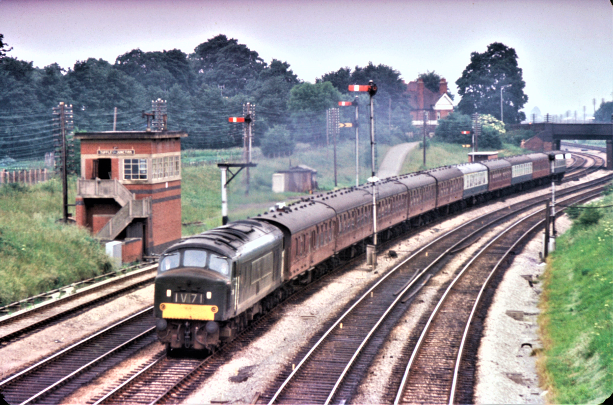
An unidentified ‘Peak’ class loco heads south through Tuffley Junction with 1V71, the 9.00am Sheffield to Paignton in August 1968 shortly before the track rationalization to the south of Gloucester. Surveyor’s pegs marking the new alignment for the down line can be seen in the bed of the northbound Western line.
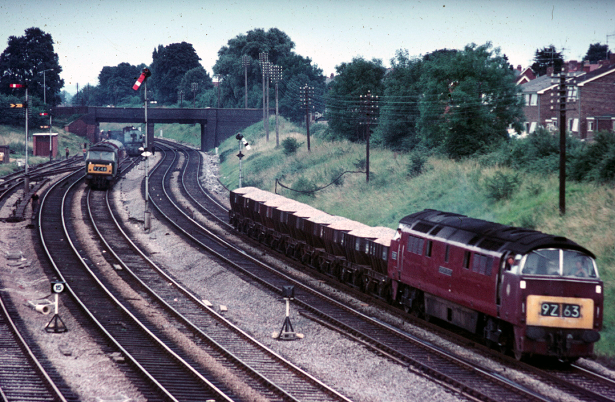
Another scene at Tuffley Junction during network remodeling in August 1968. A ‘Hymek’ stands on the down Midland line with a track removal train whilst a ‘Western’ with ballast for the realigned layout heads south before running around to return north to ballast the new track.
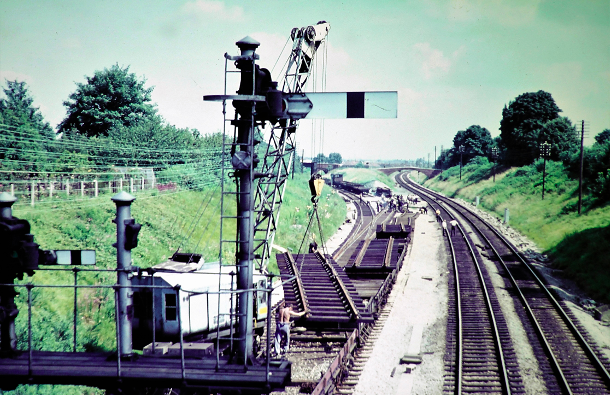
Photographed from Stroud Road ‘Black Bridge’: work in progress at Tuffley Junction with the ex-Midland lines being slewed into the ex-Great Western tracks over the weekend of 4th / 5th August 1968.
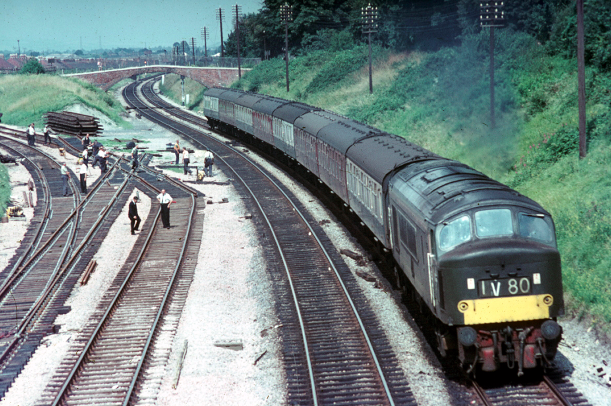
A ‘Peak’ class loco speeds past the site of the ongoing track realignment works at Tuffley Junction at the head of the down ‘Devonian’ (1V80), 10.15am Bradford to Paignton on August 4 1968.
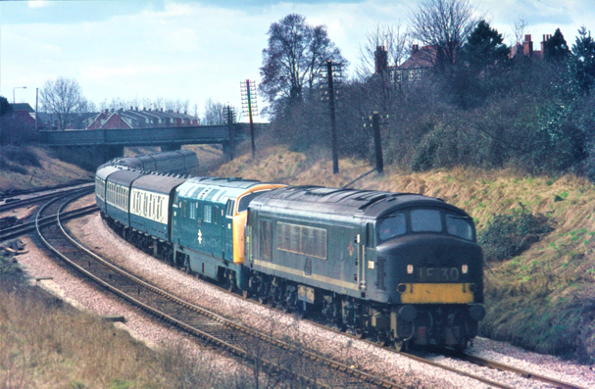
On 18 March 1970, during the period of track and signal remodeling at Bristol, ‘Peak’ No. 156 double-heads ‘Warship’ No. 845 Sprightly across the new alignment north of Tuffley Junction at the head of 1E30 10.40am Bristol Temple Meads to Newcastle.
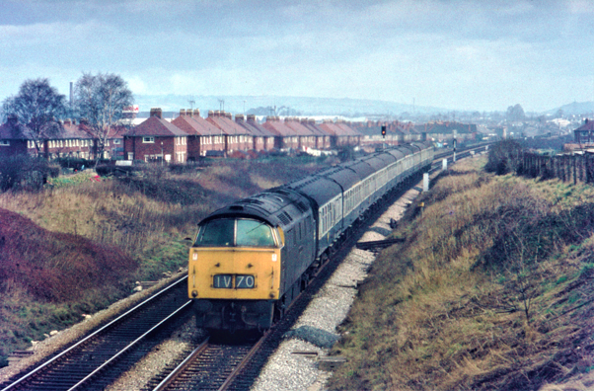
On 18 March 1970 ‘Western’ class No. 1064 Western Regent heads south from Gloucester with 1V70, the down ‘Cornishman’, following a change of locomotive that would have taken place on the Gloucester avoiding line.
